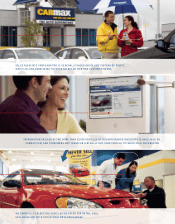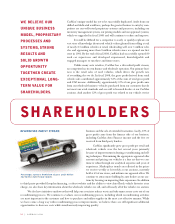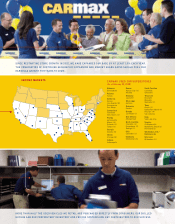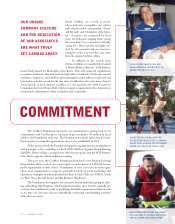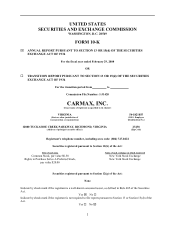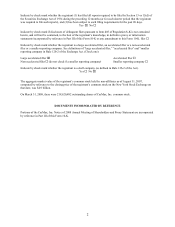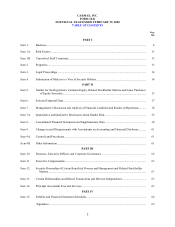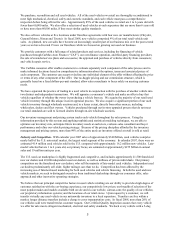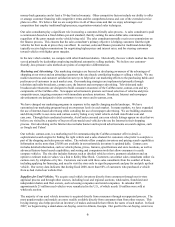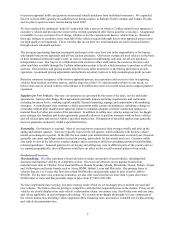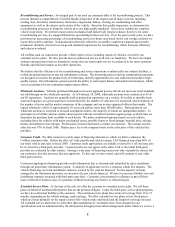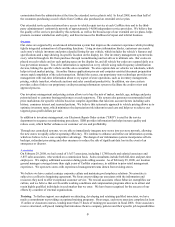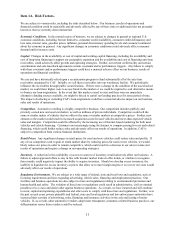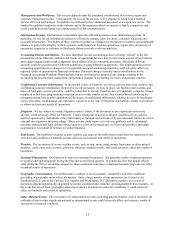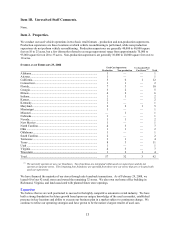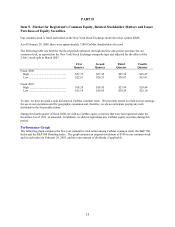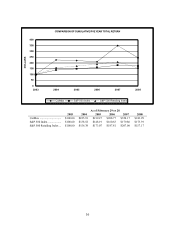CarMax 2008 Annual Report Download - page 19
Download and view the complete annual report
Please find page 19 of the 2008 CarMax annual report below. You can navigate through the pages in the report by either clicking on the pages listed below, or by using the keyword search tool below to find specific information within the annual report.7
to increase appraisal traffic and generate incremental vehicle purchases from individual consumers. We expanded
this test in fiscal 2008, opening two additional car-buying centers, in Raleigh, North Carolina, and Tampa, Florida,
and we plan to open two more centers during fiscal 2009.
We have replaced the traditional “trade-in” transaction with a process in which a CarMax-trained buyer appraises a
customer’ s vehicle and provides the owner with a written, guaranteed offer that is good for seven days. An appraisal
is available to every customer free of charge, whether or not the customer purchases a vehicle from us. Based on
their age, mileage or condition, fewer than half of the vehicles acquired through this in-store appraisal process meet
our high quality retail standards. Those vehicles that do not meet our retail standards are sold to licensed dealers
through on-site wholesale auctions.
The inventory purchasing function is primarily performed at the store level and is the responsibility of the buyers,
who handle both on-site appraisals and off-site auction purchases. Our buyers evaluate all used vehicles on the basis
of their estimated wholesale market value, as well as estimated reconditioning costs and, for off-site purchases,
transportation costs. Our buyers, in collaboration with our home office staff, utilize the extensive inventory and
sales trend data available through the CarMax information system to decide which inventory to purchase at off-site
auctions. Our inventory and pricing models help the buyers tailor inventories to the buying preferences at each
superstore, recommend pricing adjustments and optimize inventory turnover to help maintain gross profit per unit.
Based on consumer acceptance of the in-store appraisal process, our experience and success to date in acquiring
vehicles from auctions and other sources, and the large size of the U.S. auction market relative to our needs, we
believe that sources of used vehicles will continue to be sufficient to meet our current needs and to support planned
expansion.
Suppliers for New Vehicles. Our new car operations are governed by the terms of the sales, service and dealer
agreements. Among other things, these agreements generally impose operating requirements and restrictions,
including inventory levels, working capital, monthly financial reporting, signage and cooperation with marketing
strategies. A manufacturer may terminate a dealer agreement under certain circumstances, including a change in
ownership without prior manufacturer approval, failure to maintain adequate customer satisfaction ratings or a
material breach of other provisions of the agreement. In addition to selling new vehicles using our low, no-haggle
price strategy, the franchise and dealer agreements generally allow us to perform warranty work on these vehicles
and sell related parts and services within a specified market area. Designation of specified market areas generally
does not guarantee exclusivity within a specified territory.
Seasonality. Our business is seasonal. Most of our superstores experience their strongest traffic and sales in the
spring and summer quarters. Sales are typically lowest in the fall quarter, which coincides with the new vehicle
model-year-changeover period. In the fall, the new model year introductions and discounts on model year closeouts
generally can cause rapid depreciation in used car pricing, particularly for late-model used cars. Customer traffic
also tends to slow in the fall as the weather changes and as customers shift their spending priorities toward holiday-
related expenditures. Seasonal patterns for car buying and selling may vary in different parts of the country and, as
we expand geographically, these differences could have an effect on the overall seasonal pattern of our results.
Products and Services
Merchandising. We offer customers a broad selection of makes and models of used vehicles, including both
domestic and imported vehicles, at competitive prices. Our used car selection covers popular brands from
manufacturers such as Chrysler, Ford, General Motors, Honda, Hyundai, Mazda, Mitsubishi, Nissan, Subaru, Toyota
and Volkswagen and luxury brands such as Acura, BMW, Infiniti, Lexus and Mercedes. Our primary focus is
vehicles that are 1 to 6 years old, have fewer than 60,000 miles and generally range in price from $11,000 to
$30,000. For the more cost-conscious consumer, we also offer used cars that are more than 6 years old or have
60,000 miles or more and that generally range in price from $7,500 to $21,000.
We have implemented an everyday low-price strategy under which we set no-haggle prices on both our used and
new vehicles. We believe that our pricing is competitive with the best-negotiated prices in the market. Prices on all
vehicles are clearly displayed on each vehicle’ s information sticker; on carmax.com, AutoTrader.com and cars.com;
and, where applicable, in our newspaper advertising. We extend our no-haggle philosophy to every component of
the vehicle transaction, including vehicle appraisal offers, financing rates, accessories, extended service plan pricing
and vehicle documentation fees.


